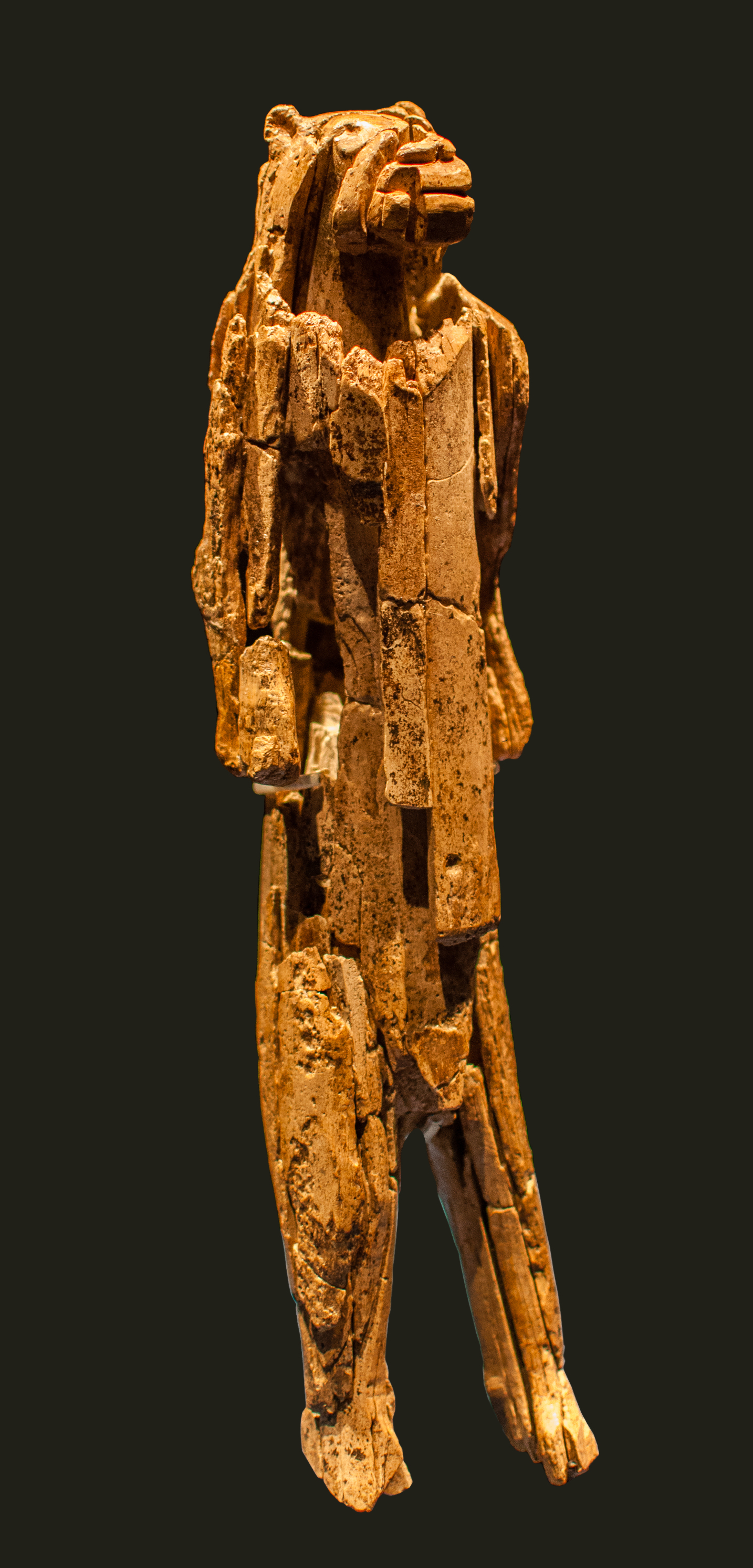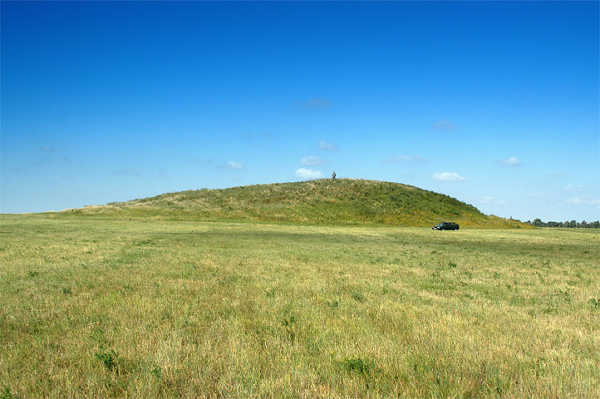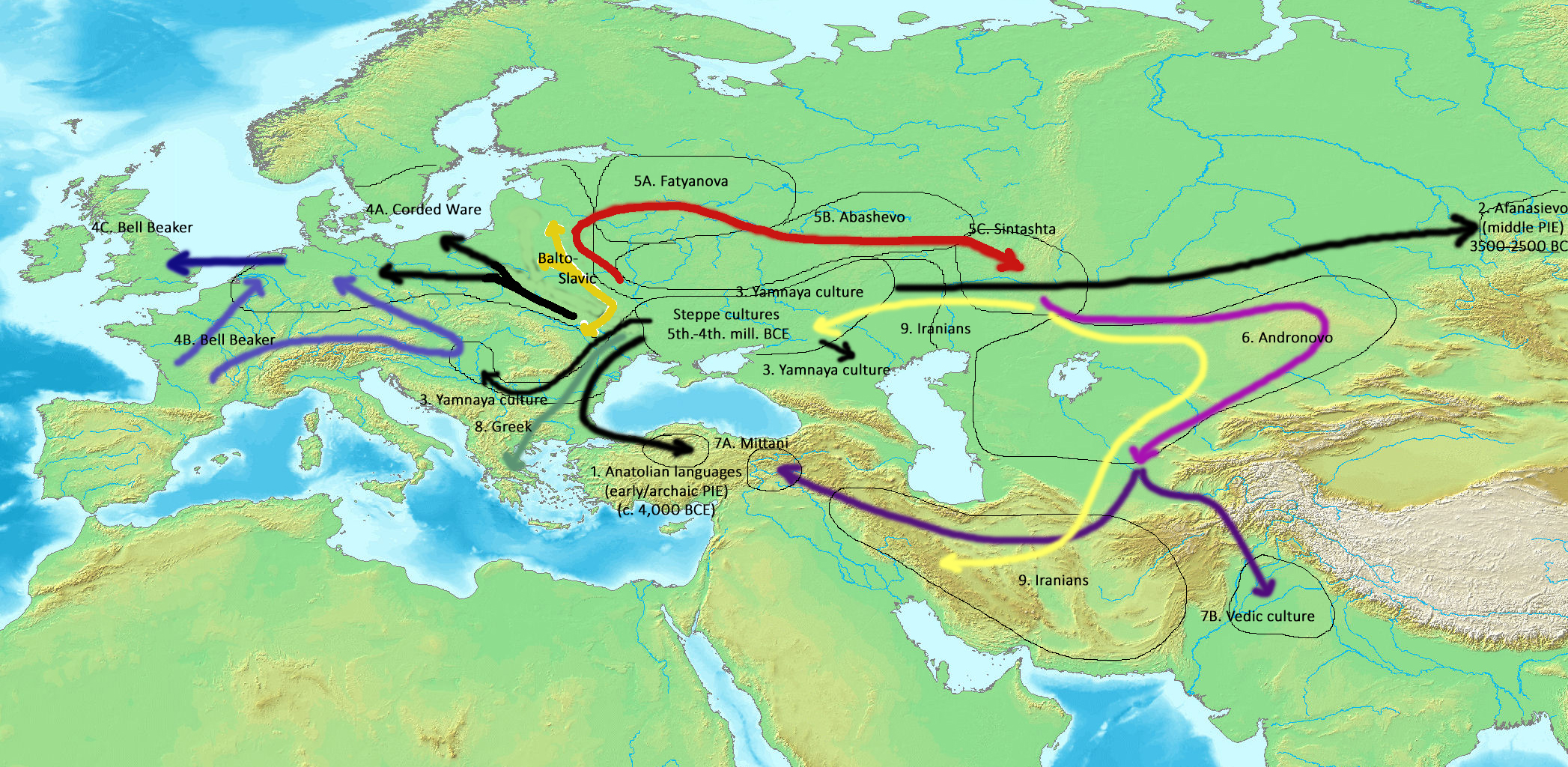|
Haplogroup R1a
Haplogroup R1a, or haplogroup R-M420, is a human Y-chromosome DNA haplogroup which is distributed in a large region in Eurasia, extending from Scandinavia and Central Europe to southern Siberia and South Asia. While R1a originated c. 22,000 to 25,000 years ago, its subclade M417 (R1a1a1) diversified c. 5,800 years ago. The place of origin of the subclade plays a role in the debate about the origins of Proto-Indo-Europeans. The SNP mutation R-M420 was discovered after R-M17 (R1a1a), which resulted in a reorganization of the lineage in particular establishing a new paragroup (designated R-M420*) for the relatively rare lineages which are not in the R-SRY10831.2 (R1a1) branch leading to R-M17. Origins R1a origins The split of R1a (M420) is computed to c. 22,000 or 25,000 years ago, which is the time of the last glacial maximum. A 2014 study by Peter A. Underhill et al., using 16,244 individuals from over 126 populations from across Eurasia, concluded that there was "a co ... [...More Info...] [...Related Items...] OR: [Wikipedia] [Google] [Baidu] |
Eastern Europe
Eastern Europe is a subregion of the European continent. As a largely ambiguous term, it has a wide range of geopolitical, geographical, ethnic, cultural, and socio-economic connotations. The vast majority of the region is covered by Russia, which spans roughly 40% of the continent's landmass while accounting for approximately 15% of its total population."The Balkans" , ''Global Perspectives: A Remote Sensing and World Issues Site''. Wheeling Jesuit University/Center for Educational Technologies, 1999–2002. It represents a significant part of European culture; the main socio-cultural characteristics of Eastern Europe have historically been defined by the traditions of |
Upper Paleolithic
The Upper Paleolithic (or Upper Palaeolithic) is the third and last subdivision of the Paleolithic or Old Stone Age. Very broadly, it dates to between 50,000 and 12,000 years ago (the beginning of the Holocene), according to some theories coinciding with the appearance of behavioral modernity in early modern humans, until the advent of the Neolithic Revolution and agriculture. Anatomically modern humans (i.e. ''Homo sapiens'') are believed to have emerged in Africa around 300,000 years ago, it has been argued by some that their ways of life changed relatively little from that of archaic humans of the Middle Paleolithic, until about 50,000 years ago, when there was a marked increase in the diversity of artefacts found associated with modern human remains. This period coincides with the most common date assigned to expansion of modern humans from Africa throughout Asia and Eurasia, which contributed to the extinction of the Neanderthals. The Upper Paleolithic has the e ... [...More Info...] [...Related Items...] OR: [Wikipedia] [Google] [Baidu] |
Kurgan
A kurgan is a type of tumulus constructed over a grave, often characterized by containing a single human body along with grave vessels, weapons and horses. Originally in use on the Pontic–Caspian steppe, kurgans spread into much of Central Asia and Eastern, Southeast, Western and Northern Europe during the 3rd millennium BC. The earliest kurgans date to the 4th millennium BC in the Caucasus, and a part of researchers associate these with the Indo-Europeans. Kurgans were built in the Eneolithic, Bronze, Iron, Antiquity and Middle Ages, with ancient traditions still active in Southern Siberia and Central Asia. Etymology According to the Etymological dictionary of the Ukrainian language the word "kurhan" is borrowed directly from the "Polovtsian" language ( Kipchak, part of the Turkic languages) and means: fortress, embankment, high grave. The word has two possible etymologies, either from the Old Turkic root ''qori-'' "to close, to block, to guard, to protect", or ''qur ... [...More Info...] [...Related Items...] OR: [Wikipedia] [Google] [Baidu] |
Late Glacial Maximum
The Last Glacial Maximum (LGM), also referred to as the Late Glacial Maximum, was the most recent time during the Last Glacial Period that ice sheets were at their greatest extent. Ice sheets covered much of Northern North America, Northern Europe, and Asia and profoundly affected Earth's climate by causing drought, desertification, and a large drop in sea levels. Based on changes in position of ice sheet margins dated via terrestrial cosmogenic nuclides and radiocarbon dating, growth of ice sheets commenced 33,000 years ago and maximum coverage was between 26,500 years and 19–20,000 years ago, when deglaciation commenced in the Northern Hemisphere, causing an abrupt rise in sea level. Decline of the West Antarctica ice sheet occurred between 14,000 and 15,000 years ago, consistent with evidence for another abrupt rise in the sea level about 14,500 years ago. Glacier fluctuations around the Strait of Magellan suggest the peak in glacial surface area was constrained to betwee ... [...More Info...] [...Related Items...] OR: [Wikipedia] [Google] [Baidu] |
Ukraine
Ukraine ( uk, Україна, Ukraïna, ) is a country in Eastern Europe. It is the second-largest European country after Russia, which it borders to the east and northeast. Ukraine covers approximately . Prior to the ongoing Russian invasion, it was the eighth-most populous country in Europe, with a population of around 41 million people. It is also bordered by Belarus to the north; by Poland, Slovakia, and Hungary to the west; and by Romania and Moldova to the southwest; with a coastline along the Black Sea and the Sea of Azov to the south and southeast. Kyiv is the nation's capital and largest city. Ukraine's state language is Ukrainian; Russian is also widely spoken, especially in the east and south. During the Middle Ages, Ukraine was the site of early Slavic expansion and the area later became a key centre of East Slavic culture under the state of Kievan Rus', which emerged in the 9th century. The state eventually disintegrated into rival regional powers and ... [...More Info...] [...Related Items...] OR: [Wikipedia] [Google] [Baidu] |
Central And Eastern Europe
Central and Eastern Europe is a term encompassing the countries in the Baltics, Central Europe, Eastern Europe and Southeast Europe (mostly the Balkans), usually meaning former communist states from the Eastern Bloc and Warsaw Pact in Europe. Scholarly literature often uses the abbreviations CEE or CEEC for this term. The Organisation for Economic Co-operation and Development (OECD) also uses the term "Central and Eastern European Countries (CEECs)" for a group comprising some of these countries. Definitions The term ''CEE'' includes the Eastern Bloc ( Warsaw Pact) countries west of the post-World War II border with the former Soviet Union; the independent states in former Yugoslavia (which were not considered part of the Eastern bloc); and the three Baltic states – Estonia, Latvia, Lithuania (which chose not to join the CIS with the other 12 former republics of the USSR). The CEE countries are further subdivided by their accession status to the European Union (EU): t ... [...More Info...] [...Related Items...] OR: [Wikipedia] [Google] [Baidu] |
Western Asia
Western Asia, West Asia, or Southwest Asia, is the westernmost subregion of the larger geographical region of Asia, as defined by some academics, UN bodies and other institutions. It is almost entirely a part of the Middle East, and includes Anatolia, the Arabian Peninsula, Iran, Mesopotamia, the Armenian Highlands, the Levant, the island of Cyprus, the Sinai Peninsula, and partly the Caucasus Region ( Transcaucasia). The region is considered to be separated from Africa by the Isthmus of Suez in Egypt, and separated from Europe by the waterways of the Turkish Straits and the watershed of the Greater Caucasus. Central Asia lies to its northeast, while South Asia lies to its east. Twelve seas surround the region (clockwise): the Aegean Sea, the Sea of Marmara, the Black Sea, the Caspian Sea, the Persian Gulf, the Gulf of Oman, the Arabian Sea, the Gulf of Aden, the Red Sea, the Gulf of Aqaba, the Gulf of Suez, and the Mediterranean Sea. Western Asia covers an are ... [...More Info...] [...Related Items...] OR: [Wikipedia] [Google] [Baidu] |
Indo-European Languages
The Indo-European languages are a language family native to the overwhelming majority of Europe, the Iranian plateau, and the northern Indian subcontinent. Some European languages of this family, English, French, Portuguese, Russian, Dutch, and Spanish, have expanded through colonialism in the modern period and are now spoken across several continents. The Indo-European family is divided into several branches or sub-families, of which there are eight groups with languages still alive today: Albanian, Armenian, Balto-Slavic, Celtic, Germanic, Hellenic, Indo-Iranian, and Italic; and another nine subdivisions that are now extinct. Today, the individual Indo-European languages with the most native speakers are English, Hindi–Urdu, Spanish, Bengali, French, Russian, Portuguese, German, and Punjabi, each with over 100 million native speakers; many others are small and in danger of extinction. In total, 46% of the world's population (3.2 billion people) speaks ... [...More Info...] [...Related Items...] OR: [Wikipedia] [Google] [Baidu] |
Indus Valley Civilization
The Indus Valley Civilisation (IVC), also known as the Indus Civilisation was a Bronze Age civilisation in the northwestern regions of South Asia, lasting from 3300 BCE to 1300 BCE, and in its mature form 2600 BCE to 1900 BCE. Together with ancient Egypt and Mesopotamia, it was one of three early civilisations of the Near East and South Asia, and of the three, the most widespread. Its sites spanned an area from much of Pakistan, to northeast Afghanistan, and northwestern India. The civilisation flourished both in the alluvial plain of the Indus River, which flows through the length of Pakistan, and along a system of perennial monsoon-fed rivers that once coursed in the vicinity of the Ghaggar-Hakra, a seasonal river in northwest India and eastern Pakistan. The term ''Harappan'' is sometimes applied to the Indus civilisation after its type site Harappa, the first to be excavated early in the 20th century in what was then the Punjab province ... [...More Info...] [...Related Items...] OR: [Wikipedia] [Google] [Baidu] |
Proto-Indo-European People
The Proto-Indo-Europeans are a hypothetical prehistoric population of Eurasia who spoke Proto-Indo-European (PIE), the ancestor of the Indo-European languages according to linguistic reconstruction. Knowledge of them comes chiefly from that linguistic reconstruction, along with material evidence from archaeology and archaeogenetics. The Proto-Indo-Europeans likely lived during the late Neolithic, or roughly the 4th millennium BC. Mainstream scholarship places them in the Pontic–Caspian steppe zone in Eurasia (present-day Ukraine and southern Russia). Some archaeologists would extend the time depth of PIE to the middle Neolithic (5500 to 4500 BC) or even the early Neolithic (7500 to 5500 BC) and suggest alternative location hypotheses. By the early second millennium BC, descendants of the Proto-Indo-Europeans had reached far and wide across Eurasia, including Anatolia (Hittites), the Aegean (the linguistic ancestors of Mycenaean Greece), the north of Europe (Corded Wa ... [...More Info...] [...Related Items...] OR: [Wikipedia] [Google] [Baidu] |
Proto-Indo-European Urheimat Hypotheses
The Proto-Indo-European homeland (or Indo-European homeland) was the prehistoric linguistic homeland of the Proto-Indo-European language (PIE). From this region, its speakers migrated east and west, and went on to form the proto-communities of the different branches of the Indo-European language family. The most widely accepted proposal about the location of the Proto-Indo-European homeland is the steppe hypothesis, which puts the archaic, early and late PIE homeland in the Pontic–Caspian steppe around 4,000 BC. The leading competitor is the Anatolian hypothesis, which puts it in Anatolia around 8,000 BC. A notable third possibility, which has gained renewed attraction due to recent aDNA research, is the Armenian hypothesis which situates the homeland for archaic PIE south of the Caucasus. Several other explanations have been proposed, including the outdated but historically prominent North European hypothesis, the Neolithic creolisation hypothesis, the Paleolithic continui ... [...More Info...] [...Related Items...] OR: [Wikipedia] [Google] [Baidu] |
Indo-Iranian Languages
The Indo-Iranian languages (also Indo-Iranic languages or Aryan languages) constitute the largest and southeasternmost extant branch of the Indo-European language family (with over 400 languages), predominantly spoken in the geographical subregion of Southern Asia. They have more than 1.5 billion speakers, stretching from Europe (Romani), Mesopotamia (Kurdish languages, Zaza–Gorani and Kurmanji Dialect continuum) and the Caucasus ( Ossetian, Tat and Talysh) eastward to Xinjiang ( Sarikoli) and Assam (Assamese), and south to Sri Lanka ( Sinhala) and the Maldives ( Maldivian), with branches stretching as far out as Oceania and the Caribbean for Fiji Hindi and Caribbean Hindustani respectively. Furthermore, there are large diaspora communities of Indo-Iranian speakers in northwestern Europe (the United Kingdom), North America (United States, Canada), Australia, South Africa, and the Persian Gulf Region (United Arab Emirates, Saudi Arabia). The common ancestor of all of ... [...More Info...] [...Related Items...] OR: [Wikipedia] [Google] [Baidu] |





.png)




